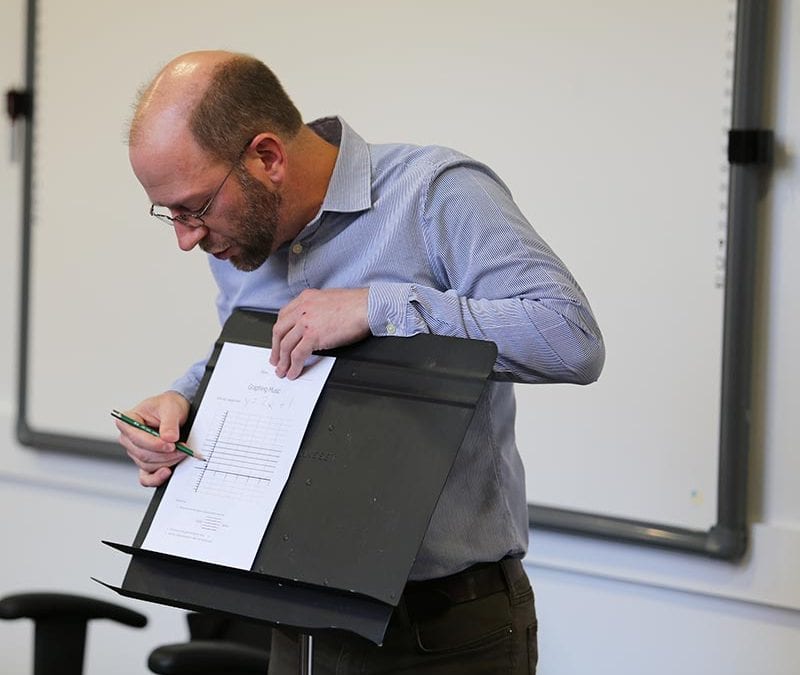Hartman Hall is home to the Moorestown Friends Math Department, but there is one wing that is the exception. Around the corner from MS/US Math Teacher Karen McHugh’s classroom, there is a choir room where MS/US Choral Director Nathan Wadley teaches and leads the school’s various choirs. Recently, the neighboring teachers decided to create a musical mathematical collaboration for their seventh grade students to show how math can be applied outside of classroom textbooks and theory in a unique way.
“My students always ask me about real-world applications of math so Mr. Wadley and I thought a collaborative lesson showing the integration of math and music would be a fun and different experience for the students,” said Mrs. McHugh.
On April 19, Mrs. McHugh’s seventh grade students walked over to the choir room to learn how their study of slopes could be translated to music sheets.
Mr. Wadley explained the various ways that music is mathematical, as it is the calculations of the movement of sound through time. The time signature of a musical score is a fraction that indicates how many beats are to be contained in each bar and which note value is to be given on one beat. Musical notes are plotted on a staff, similar to plotting slope equations on a graph. In determining the slope of points on a graph, the rule of rise over run is followed. In musical terms, as notes rise on the staff, the pitch changes. The run would be the rhythm of the notes.
After connecting the mathematical and musical worlds together, the students were given equations to plot as pitch points on a musical staff. Once the equations were plotted, Mr. Wadley played the notes as chords on the piano for the class to hear the distinctive audio differences between the numerous musical mathematical compositions.

